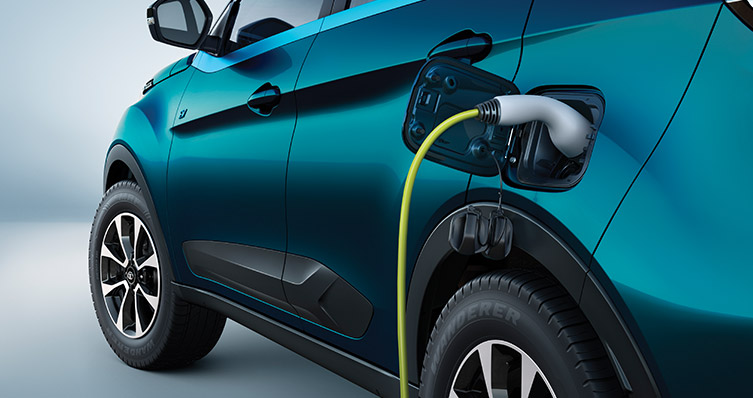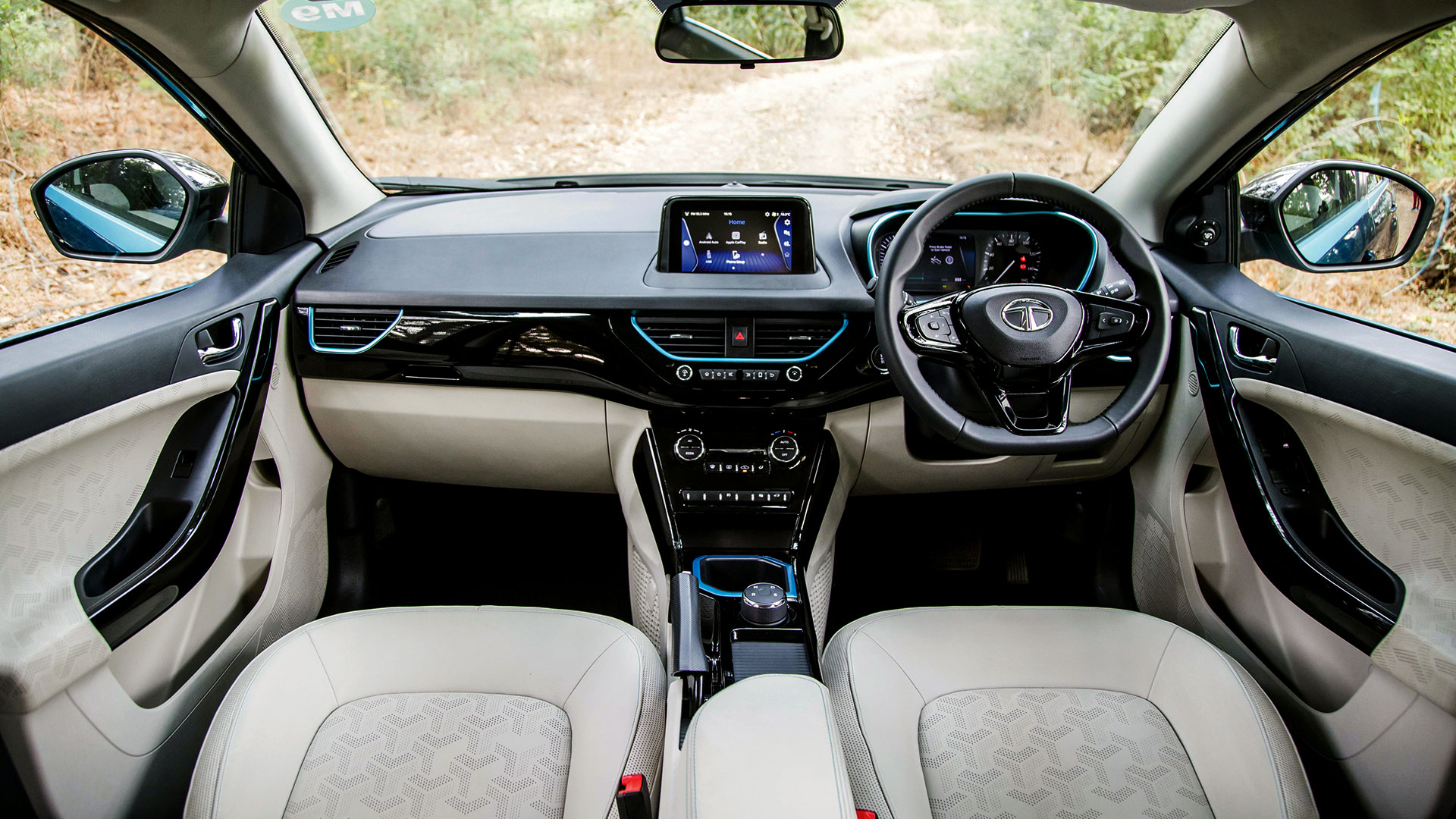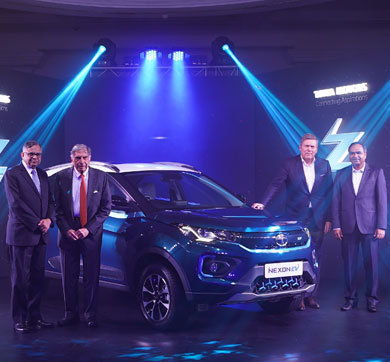December 2020 | 1857 words | 7-minute read
The digital consumers are demanding delightful and personalised customer experiences, and the automobile industry is adapting and responding to these changes. The definition of ‘experience’ is now beyond the driving experience to include purchase and ownership. Moreover, the whole concept of shared ownership is bringing structural changes to the industry.
Tata Motors has developed its future vision of mobility with a focus on CESS — Connected, Electric, Shared and Safe. At the core of the vision is the Connected Vehicle Platform (CVP) to connect vehicles, store and analyse data, and build applications for consumers. In an industry first, it has been developed as a common platform across commercial, passenger and electric vehicles (CV, PV and EV). Tata Motors has decided to extend the same IoT platform for manufacturing operations as part of the future Industry 4.0 strategy.
The build story
Tata Motors’ first foray into connectivity was with FleetMan for CVs in 2012, and they have 2 lakh+ connected vehicles already on the roads. As part of this initiative, Tata Motors worked with an external vendor to introduce this capability. However, with digital becoming a key driver, Tata Motors adopted a bold approach to leverage connectivity based on three key levers:

The work began in mid-2018 with the deployment of a cross-functional team. “We created an internal white paper on the overall approach strategy, technology stack, collaborations, deployment strategy, governance model and go-live timetable,” says Rajendra Petkar, chief technology officer, Tata Motors. “Following the executive committee’s agreement, we went into execution mode considering the aggressive timetable we had laid down for ourselves.”
For building the platform, Tata Motors leveraged the strengths of the Tata group — working with Tata Elxsi, Tata Communications, Tata Consultancy Services (TCS) and Tata Technologies (see ‘Architecting Change Together’) — to make it possible.

Charming the PV consumer
The Nexon EV was the perfect candidate for launching the CVP and the connected vehicle experience for consumers. EVs rely heavily on software due to large dependence on power electronics for drivetrain and battery management, making it a digital product at the core. The CVP foundation enabled Tata Motors to build 30+ features (like remote vehicle operation, navigation and location-based services) for enhancing customer experience. The gamification module enables customers to benchmark themselves against others on efficient driving, safe braking behaviour, etc.
One of the key aspects of building a great connected customer experience is collaborating with other players in the ecosystem. By connecting Tata Power’s charging stations to the EVs platform, Tata Motors took the first steps towards building an EV ecosystem.
“Traditionally, our relationship with customers was limited to transactional activities like selling vehicles and servicing them at regular intervals,” says Shailesh Chandra, president, passenger vehicle business unit, Tata Motors. “The CVP provides the ability to create unique and sustainable customer experiences throughout the vehicle ownership lifecycle. The most common example is upgrading vehicle features through software-over-the-air updates, breaking the standard business model for upgrading vehicle/features via model years or mid cycles.”
It is about style and substance in the CV market
For the CV market, the story goes beyond just delivering experience to enabling Tata Motors’ customers to stay competitive by improving their profitability.
In July 2020 Tata Motors launched Fleet Edge, an application using the CVP as its foundation. Built as a modular platform, which can be scaled up to offer a wide range of solutions with third-party applications through APIs (application programming interfaces), Fleet Edge offers features like track and trace, geo-fencing and alerts, driver behaviour monitoring, and fuel efficiency monitoring. These can be tracked by the customer or fleet manager through an intuitive representation on the online portal or app.
“The Indian CV market is very cost sensitive. For any new solution to succeed here, it must offer significant value addition to the customer’s business at the right cost. Extending past basic vehicle data, the CVP aggregates information across the vehicle’s lifecycle, including operational and financial data, to deliver insights relevant to multiple stakeholders in the value chain,” says Girish Wagh, president, Commercial Vehicle Business Unit, Tata Motors. “Fleet Edge is uniquely positioned to enable our customers to improve their operational efficiency and, hence profitability. It will, in turn, help them better serve their customers profitably. Beyond Fleet Edge, CVP will enable online storefronts, products for drivers, mechanics, and other key stakeholders.”

Architecting change together
The CVP is built in four layers with Tata companies bringing their domain strengths to different layers.
Layer 1 comprises the telematics unit in the vehicle, capturing all the data.
Layer 2 provides connectivity from the vehicle to the cloud.
Layer 3 is the cloud-based IoT platform. It is the heart of the system where the data is consolidated, enriched with information, and segregated into streams and lakes, enabling various departments to apply analytics to the relevant data. This can then be driven downstream to the application layer.
Layer 4 is the marketplace with a rich set of APIs to aid the development of apps like Z Connect for Nexon EV.
To build layer 3, Tata Motors partnered with Tata Elxsi, a company that’s been at the forefront of advanced driver-assistance systems and autonomous research for a decade. Besides, the company had Centres of Excellence for IoT/5G, artificial intelligence and data analytics, virtual automated testing — all building blocks of the future of mobility — in place.
“Tata Motors wanted to own an IoT platform that covers automotive IoT use cases starting from connected cars and expandable to Industry 4.0 to transform internal operations,” says Gomathy P, CVP programme head at Tata Elxsi.
The ask? First, focus on data as the most important component in the system. Tata Motors wanted to unify and synergise data and analytics across product development, customer use cases, allied businesses and service networks. Consolidating all data into a singular platform would also make it more manageable to apply a uniform data security policy.
Ms Gomathy says, “We partnered as the integration partner and cloud-based IoT platform vendor to develop an indigenous CVP that provides unified data platform services based on our IoT middleware. This was best suited to provide the data aggregation and platform integration services to realise the expected common standard technology stack and platform. It delivers the scalability and high performance required to support Tata Motors’ entire range of EVs, CVs and PVs.”
Second, along with an innovation platform, Tata Motors wanted a digital business delivery platform. Ms Gomathy adds, “Their vision is to be a digital service provider as well. To do so, there had to be a digital economy platform — where we can measure what is being consumed, associate a value and offer a service like rent a car. It’s a new thought for automotive OEMs (original equipment manufacturer). They wanted an enabler platform that would sustain the future of their business and be scalable.”
Third, it had to be future proof. Ms Gomathy says, “Ours is not a closed-box technology. It will run in a continuous development and integration mode. We must be open to the changing tech scape and security environ and keep upgrading. That is where the cloud becomes relevant. What goes inside a car is difficult to change often but if the intelligence is in the cloud, if the cloud follows the true spirit of DevOps and if it is done in a continuous integration and development model, you are future proof.
“Future proofing also comes from technology choices. This solution is built on micro services, not as a monolithic brick. So, if any service or functionality needs an upgrade, it can be done without taking a downtime. It is agile.”
Tata Motors also leveraged Tata Communications to provide connectivity at layer 2. The CVP includes a multi-profile embedded SIM, hosting two networks at any point in time for uninterrupted connectivity; Tata Communications provides the network services for this.
Tata Technologies, as the engineering partner, provides support on developing the application layer, data management layer, and end-user applications at layer 4.
TCS, as the IT partner, manages the cloud infrastructure.
“The One Tata ecosystem is already at the heart of our CVP,” says Mr Wagh, “and opportunities exist to partner and leverage digital products and services being developed by group companies.”

Being future ready
Tata Motors is betting on the CVP heralding a paradigm shift in the way customers relate to their vehicles and to the company. Over 80% of Indian consumers think that increased connectivity will be beneficial to them in the longer term, and around 94% of them are ready to pay more for connected features, reveals Deloitte’s Consumer Automotive Study 2020. In an industry facing significant headwinds, the launch of the CVP has given Tata Motors a distinct competitive edge.
“Challenges across different lines of business have been largely about balancing customer demands, experience and capital costs,” says Mr Petkar. “PV and EV customers, being owners and drivers, are more concerned with personalised benefits. In the CV space, fleet owners concern themselves with business benefits, looking for optimisation levers and operational intelligence to maximise the vehicle’s total cost of ownership.
Tata Motors’ roadmap is to put the CVP — already architected to leverage 5G which is expected to propel adoption of connected vehicle — into every new vehicle. Combined with its reach across segments, the platform will give Tata Motors the advantage of getting the largest data set in the auto market. Tapping into that data is going to drive the next generation of revenue streams like vehicle personalisation services and shared mobility.
Tata Motors has invested early in creating the foundation of a digital ecosystem, and all that it needs to do is to ‘connect’ the dots. It is always easier to do it in hindsight, but more exciting to do it looking ahead!
—Monali Sarkar and Munira Patel













